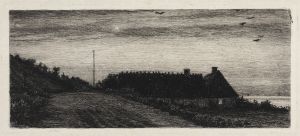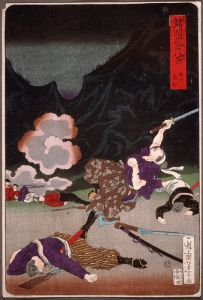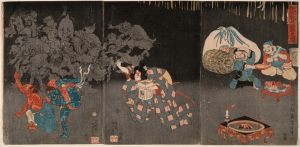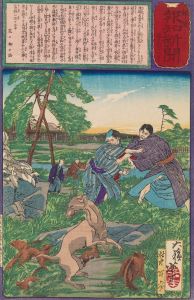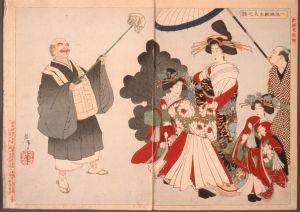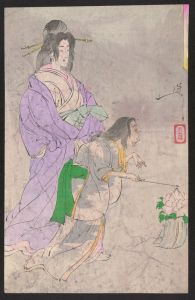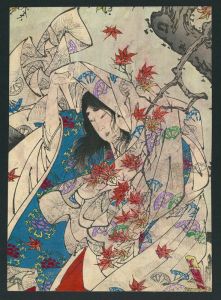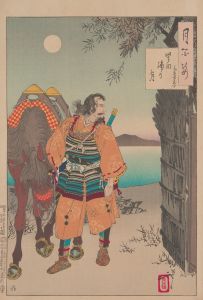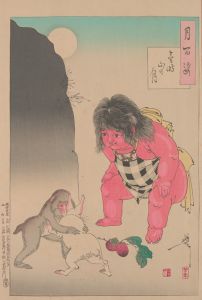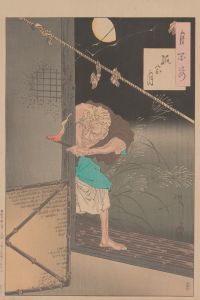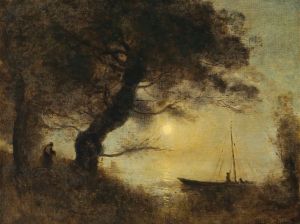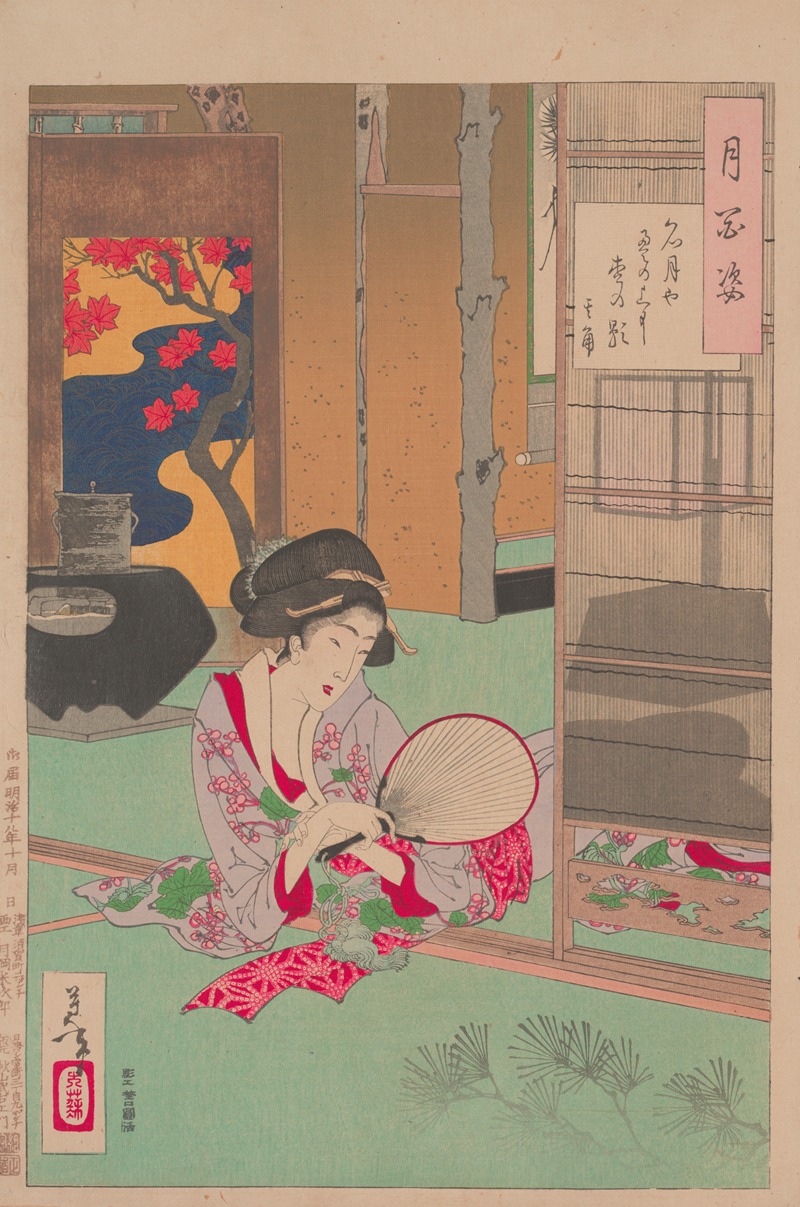
Woman watching the shadow of a pine branch cast by the Moon
A hand-painted replica of Tsukioka Yoshitoshi’s masterpiece Woman watching the shadow of a pine branch cast by the Moon, meticulously crafted by professional artists to capture the true essence of the original. Each piece is created with museum-quality canvas and rare mineral pigments, carefully painted by experienced artists with delicate brushstrokes and rich, layered colors to perfectly recreate the texture of the original artwork. Unlike machine-printed reproductions, this hand-painted version brings the painting to life, infused with the artist’s emotions and skill in every stroke. Whether for personal collection or home decoration, it instantly elevates the artistic atmosphere of any space.
Tsukioka Yoshitoshi (1839–1892) was a renowned Japanese artist known for his work in the ukiyo-e genre of woodblock printing and painting. He is often celebrated for his innovative approach to traditional Japanese art, particularly during the Meiji era, a time of significant cultural and societal change in Japan. Yoshitoshi's work often explored themes of beauty, violence, and the supernatural, reflecting both the turmoil and the fascination with modernity that characterized his era.
One of Yoshitoshi's notable works is "Woman Watching the Shadow of a Pine Branch Cast by the Moon." This piece is part of his acclaimed series "One Hundred Aspects of the Moon" (Tsuki hyakushi), which was published between 1885 and 1892. The series consists of 100 woodblock prints, each depicting scenes from Japanese and Chinese history, literature, and folklore, all unified by the motif of the moon. This series is considered one of Yoshitoshi's masterpieces and showcases his mature style, characterized by dynamic compositions, expressive figures, and a keen attention to detail.
"Woman Watching the Shadow of a Pine Branch Cast by the Moon" exemplifies Yoshitoshi's ability to blend traditional Japanese aesthetics with a modern sensibility. The print features a woman gazing at the shadow of a pine branch, which is cast by the moonlight. This scene captures a moment of quiet introspection and natural beauty, themes that are prevalent throughout Yoshitoshi's work. The use of light and shadow in the print demonstrates Yoshitoshi's skill in creating depth and atmosphere, drawing the viewer into the serene and contemplative world he depicts.
Yoshitoshi's work often reflects the influence of Western art, which was becoming increasingly popular in Japan during the Meiji period. This influence can be seen in his use of perspective and shading, techniques that were not traditionally emphasized in Japanese art. Despite these Western influences, Yoshitoshi remained deeply rooted in Japanese culture and aesthetics, as evidenced by his choice of subjects and his adherence to the ukiyo-e tradition.
The "One Hundred Aspects of the Moon" series, including "Woman Watching the Shadow of a Pine Branch Cast by the Moon," was produced during a time of personal and professional transformation for Yoshitoshi. After experiencing financial difficulties and mental health challenges earlier in his career, he achieved renewed success and recognition with this series. The prints were well-received by the public and helped to solidify his reputation as one of the leading artists of his time.
Yoshitoshi's legacy continues to be celebrated today, as his work offers a unique window into the cultural and artistic transitions of 19th-century Japan. His ability to capture the complexities of human emotion and the beauty of the natural world has earned him a lasting place in the history of Japanese art. "Woman Watching the Shadow of a Pine Branch Cast by the Moon" remains a testament to his artistic vision and his contribution to the ukiyo-e tradition.





